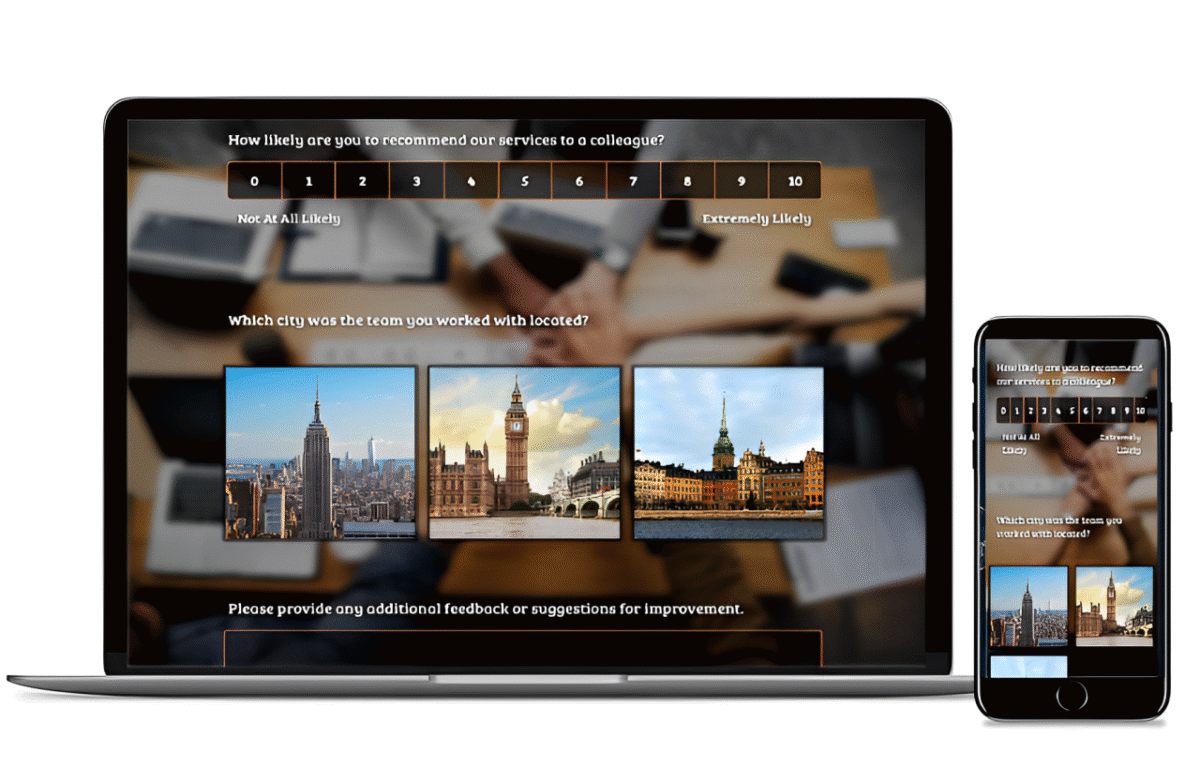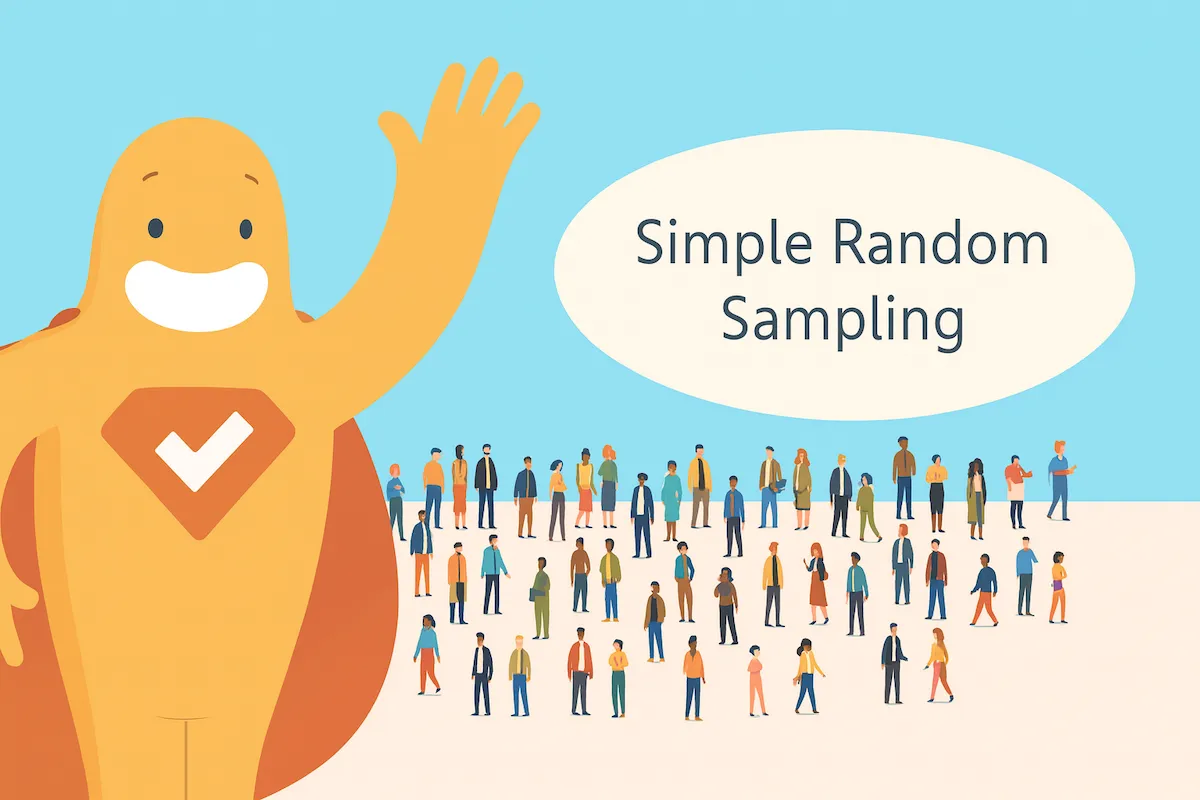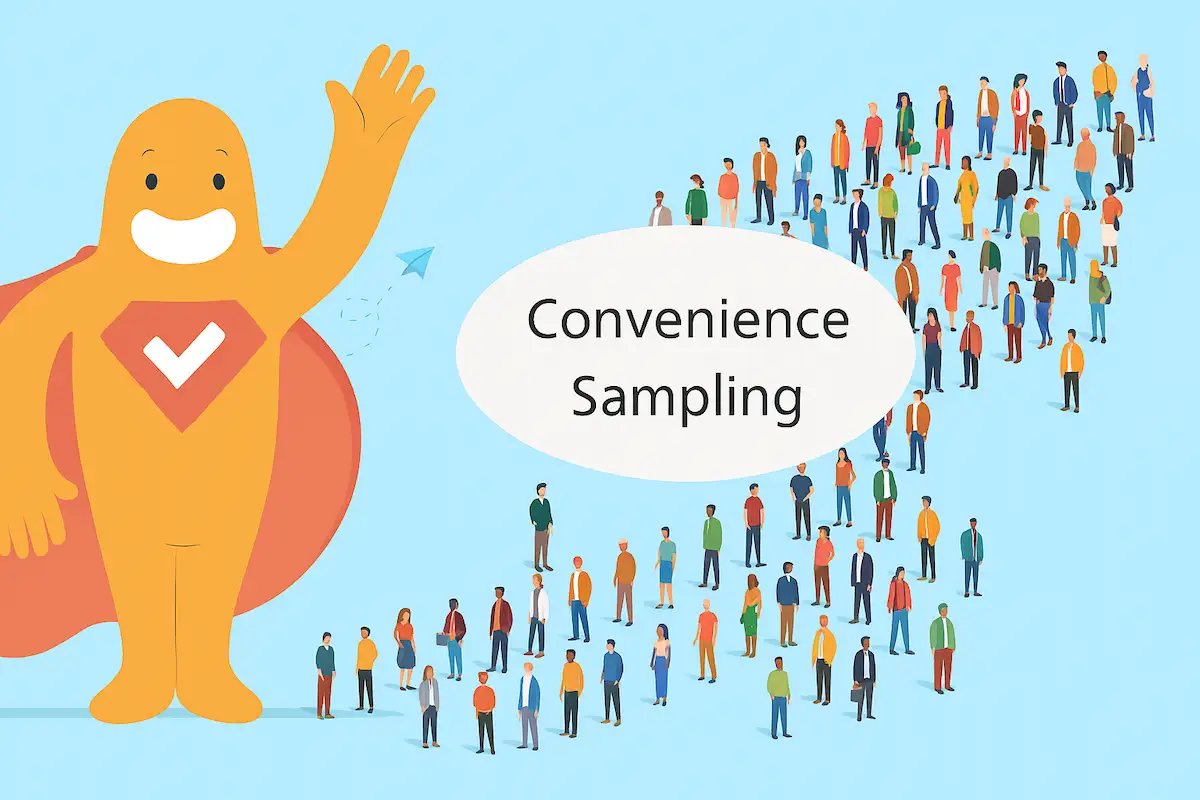“How did we do today?” Many of us have been asked to answer that simple question following a transaction. Perhaps it was a text message, an email, or a quick question on a kiosk. However, that’s just one type of client success survey. In this blog, we’ll take a look at ten different types of surveys that can be used to measure success, and what to do if you receive an overwhelming number of poor responses.
Create Your FREE Client Survey or Questionnaire Now!
What is a Client Success Survey?
A client success survey is a tool used by businesses to determine how satisfied a client or customer was with their product or service. It typically consists of a series of questions designed to gather information about the client’s experience, their level of satisfaction, areas of improvement, and suggestions for enhancements.
The goal of a client success survey is to understand how well the company is meeting the needs and expectations of its clients and to identify areas where improvements can be made to enhance the client’s experience and drive success in the future – for both parties.
Client surveys can cover various aspects of the client relationship, including product quality, customer service, communication, pricing, and overall satisfaction. The feedback collected from these surveys is valuable for companies as it helps them make data-driven decisions to improve their products or services and strengthen relationships with clients.
10 Types of Client Success Surveys
There are several types of client success surveys that businesses can use to gather feedback and assess client satisfaction. Here are some common types of client success surveys.
1. Post-Purchase Satisfaction Surveys
These surveys are sent to clients after they have made a purchase or completed a transaction. They aim to assess the client’s satisfaction with the buying process, product/service quality, and overall experience.
2. Onboarding Client Survey
Onboarding surveys are typically conducted at the beginning of a client’s journey with a company, such as after they sign up for a service or product. These surveys help gather feedback on the onboarding process, initial impressions, and expectations.
3. Regular Check-In Surveys
These surveys are sent periodically to clients to assess ongoing satisfaction and gather feedback on their experience over time. Regular check-in surveys can help identify issues early and ensure that clients remain satisfied throughout their journey.
4. Annual or Quarterly Client Surveys
These surveys are conducted on a less frequent basis, typically annually or quarterly, to gather comprehensive feedback on the client’s overall satisfaction, loyalty, and perception of the company’s performance over a longer period.
5. Net Promoter Score (NPS) Surveys
NPS surveys measure client loyalty by asking clients how likely they are to recommend the company to others. Responses are typically provided on a scale of 0 to 10, with clients categorized as Promoters, Passives, or Detractors based on their score. Check out our blogs about NPS Surveys.
6. Transactional Surveys
Transactional surveys are sent immediately after specific interactions or transactions with the company, such as after contacting customer support or completing a service request. These surveys help assess satisfaction with individual touchpoints and interactions.
7. Product/Service Feedback Surveys
These surveys focus specifically on gathering feedback about the company’s products or services, including features, functionality, usability, and performance.
8. Customer Effort Score (CES) Surveys
CES surveys measure the ease of the client’s experience when interacting with the company. Clients are typically asked to rate the ease of completing a task or resolving an issue on a scale.
9. Closed-Loop Surveys
Closed-loop surveys involve following up with clients individually after they provide feedback to address their concerns or issues directly. This personalized approach demonstrates a commitment to client satisfaction and can help resolve issues effectively, or “close the loop.”
10. Customer Satisfaction (CSAT) Surveys
A CSAT survey asks customers “How satisfied are you with the results of your most recent interaction?” Whereas NPS survey results reflect how the customer feels about the brand, CSAT surveys are all about individual agent and contact center performance.
For best results, companies may use a combination of these survey types to gather comprehensive feedback and ensure ongoing client success. Read about 18 Different Types of Survey Methods and the pros and cons of each on our blog.
Create Your FREE Client Survey or Questionnaire Now!
Common Client Survey Questions
When creating a client survey, it’s essential to ask questions that will provide valuable insights into the client’s experience, satisfaction level, and areas for improvement. Here are some example questions you might consider including on your survey.
Demographic Information
- What industry do you work in? What is your role within your organization?
- How long have you been using our product/service?
Overall Satisfaction
- How satisfied are you with our product/service?
- On a scale of 1 to 10, how likely are you to recommend our product/service to others?
Product/Service Usage
- How frequently do you use our product/service?
- What features of our product/service do you find most valuable?
Customer Service
- How would you rate the quality of customer service you received?
- Were your inquiries or issues resolved in a timely manner?
Communication
- How would you rate our communication with you (e.g., email updates, newsletters)?
- Do you feel well-informed about new features, updates, or changes to our product/service?
Ease of Use
- How intuitive do you find our product/service to use?
- Have you encountered any challenges or difficulties while using our product/service?
Improvement Suggestions
- What improvements or enhancements would you like to see in our product/service?
- Is there anything specific we could do to better meet your needs or expectations?
Competitive Advantage
- How does our product/service compare to competitors in the market?
- What factors influenced your decision to choose our product/service over others?
Future Intentions
- Are you planning to continue using our product/service in the future?
- Would you consider purchasing additional products/services from us in the future?
These are just examples, and the specific questions you include may vary depending on your industry, the nature of your business, and your goals for the survey. It’s also essential to keep the client survey concise to encourage participation and ensure that the customer survey questions are clear and easy to understand.
Create Your FREE Client Survey or Questionnaire Now!
How To Handle a Negative NPS (Unhappy Clients)
If the customer survey results indicate dissatisfaction or areas for improvement, particularly on your NPS survey question, it’s crucial to take proactive steps to address the issues identified. Here’s what you can do:
Analyze the Results Thoroughly
Review the survey results carefully to understand the specific areas where clients are dissatisfied or where improvements are needed. Look for trends or recurring themes in the feedback. SurveyLegend provides real-time analytics making analysis of results that much easier!
Prioritize Issues
Some issues are more important than others. Identify the most critical issues that need immediate attention. Prioritize them based on their impact on client satisfaction and business goals. Then, come back to the other issues that are still important, but less so in the scheme of things.
Communicate with Clients
Reach out to clients who provided negative feedback to gather more details and understand their concerns better. Be transparent with clients about the actions you plan to take in response to their feedback; this builds trust and demonstrates your commitment to addressing their concerns.
Develop Action Plans and Implement Changes
Create action plans to address the identified issues systematically. Assign responsibilities to team members and establish clear timelines for implementing solutions. Then, take proactive steps to address the issues raised by clients. This might involve improving product features, enhancing customer service processes, or refining communication strategies.
Monitor Progress for Continuous Improvement
After implementing changes, follow up with clients to inform them of the improvements made and gather feedback on whether the changes have addressed their concerns to their satisfaction. Continue to monitor client satisfaction metrics by sending out follow-up surveys to determine if the changes you’ve implemented are working and being received well. Adjust strategies as needed based on ongoing feedback and evolving client needs.
Celebrate Successes
Acknowledge and celebrate improvements in client satisfaction and success with your team. Recognizing progress can boost team morale and reinforce the importance of prioritizing client satisfaction.
Client Satisfaction Survey Example
Below is an example of a client survey from SurveyLegend, the powerful and free online survey tool. You’ll see a variety of types of questions, including multiple choice, NPS, a picture question, and an open-ended question to gather in-depth feedback.

Conclusion
Client satisfaction surveys are crucial for any business regularly engaging with clients and customers. Without them, it can be difficult to determine how well you’re meeting their needs and what you can do to improve if you’re failing to live up to expectations. There are a number of different types of client satisfaction surveys you can use, with each one serving a specific purpose and providing valuable insights into different aspects of the client experience. And, by taking proactive steps to address negative survey results, you can demonstrate your commitment to client success and strengthen relationships with your clients.
Ready to create your client satisfaction survey? Start today for free with SurveyLegend. Our surveys are secure, responsive, and user-friendly. We offer various types of surveys and questions, including our popular image-based surveys, and we provide robust analytics at the conclusion of the survey.
Do you regularly use client satisfaction surveys? Have you taken one of these surveys yourself recently? What did you think about the questioning used? Let us know in the comments.
Create Your FREE Client Survey or Questionnaire Now!
Frequently Asked Questions (FAQs)
A client success survey should be used to determine how satisfied a client or customer was with your product or service. By understanding if you met their needs and expectations, you can continue to maintain your level of quality or service or work to improve it.
Almost all client success surveys include an NPS survey question. Short for Net Promoter Score, an NPS survey question asks if the client would be likely to recommend your product or service, on a scale of one to ten which determines if they are promoters, neutral, or detractors.
If you have a poor NPS, first understand why it is negative. Then, create action plans to address the identified issues systematically and take proactive steps to make improvement, whether that be adding product features, enhancing customer service, or refining communication strategies.



